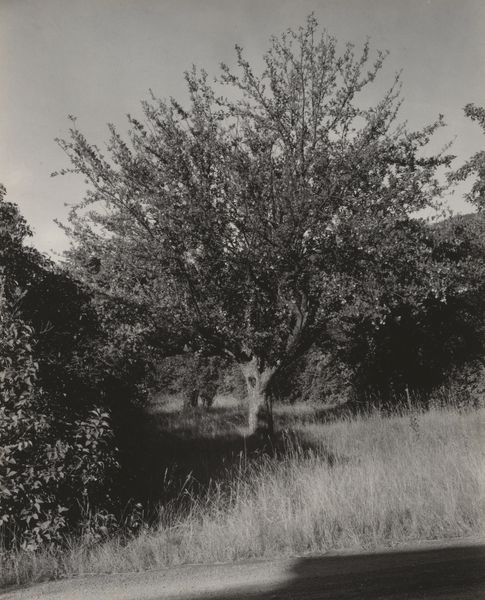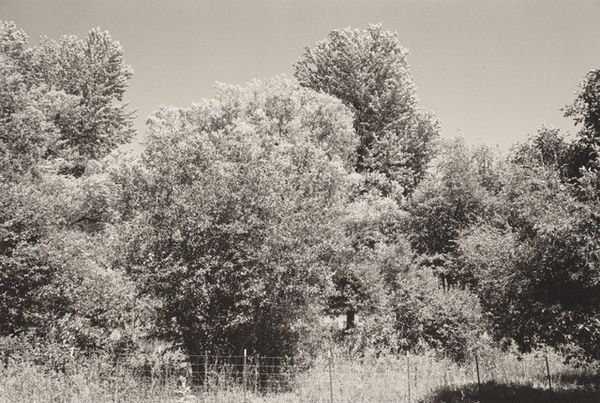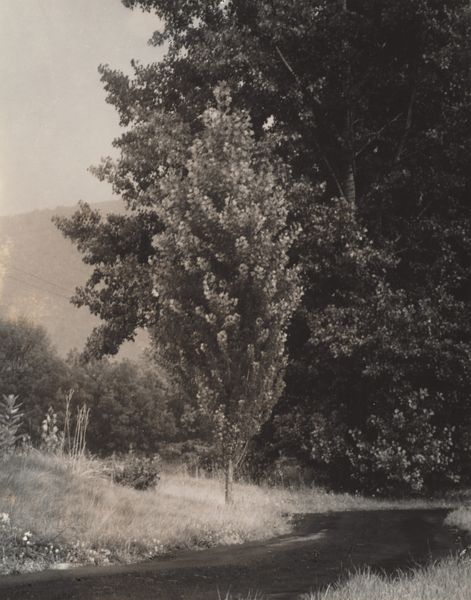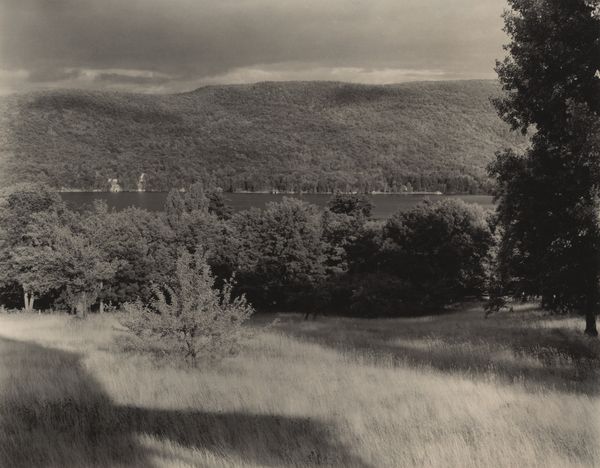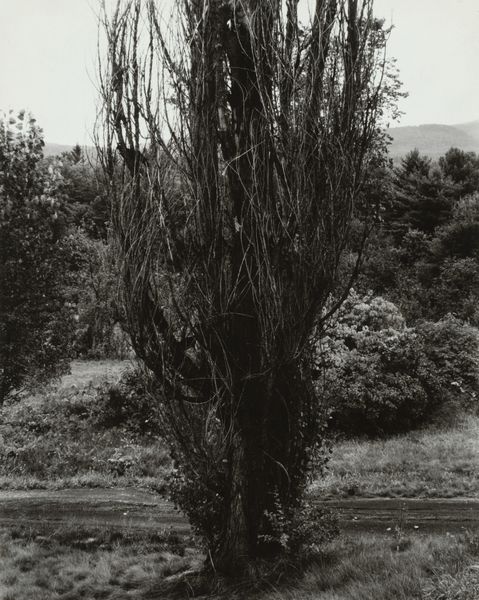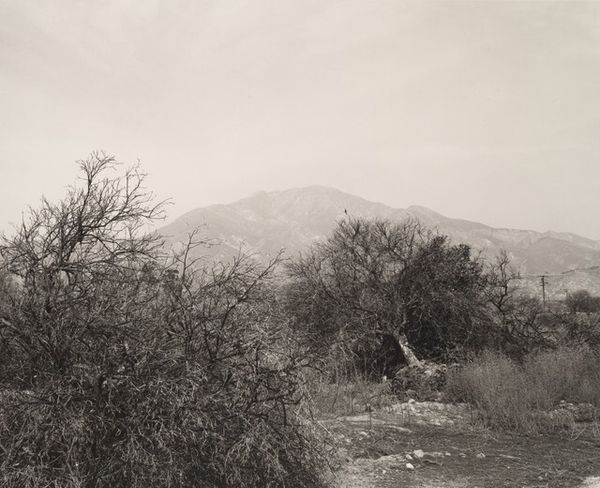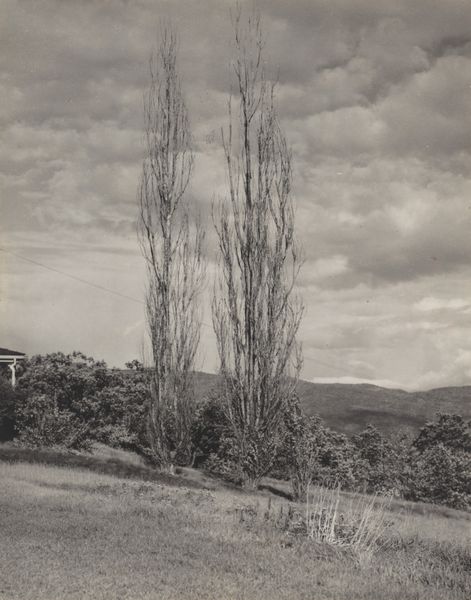
photography, gelatin-silver-print
#
black and white photography
#
landscape
#
photography
#
black and white
#
gelatin-silver-print
#
monochrome photography
#
monochrome
#
modernism
#
realism
Dimensions: image: 29.6 × 20 cm (11 5/8 × 7 7/8 in.) sheet: 35.4 × 28 cm (13 15/16 × 11 in.)
Copyright: National Gallery of Art: CC0 1.0
Curator: Gazing at Robert Adams’ "Baker County, Oregon" feels like stumbling upon a half-forgotten dream, wouldn't you agree? It’s a gelatin-silver print, capturing a landscape touched by human presence between 1999 and 2003. What whispers to you first from this composition? Editor: An odd calm settles in me as I look at this; the mundane made iconic. That picnic table—it is like an altar strewn with offerings, white spheres lined up like…teeth? Pearls? Curator: Interesting—I see what you mean about the "altar" quality, it does lend the piece a layer of contemplative seriousness. Adams is celebrated for how he portrays the evolving American West. In this shot, though, there is no manifest destiny, only quiet alteration of landscape—the mundane you called it, elevated by stark light and shadow. Editor: Yes, the light! And the balls lined atop the table are calling out. I find them eerily similar to Memento Mori—but not skulls so…eggs then? In pagan symbolic thinking eggs signal rebirth and nature’s cycles. Maybe Adams wants to talk about the clash between our industrial urge and ecological sensitivity through this photo? Curator: Yes! And this recalls Adam's devotion to conveying both beauty and a sense of precarity that’s interwoven in our contemporary existence. It’s a simple tableau, but everything, down to the rough-hewn texture of that picnic table, feels so meticulously considered. Each element, a testament or an accusation… Editor: A silent testament, perhaps, to what persists, what is altered. This image certainly sits longer with me than expected—it lingers, almost like a philosophical problem posed in monochrome. I would keep the dialogue with it running. Curator: Absolutely. Adams offers us here a stage, really, for our own projections. So it is that its symbolic meaning never settles; which is, in its own quiet way, an achievement.
Comments
No comments
Be the first to comment and join the conversation on the ultimate creative platform.



